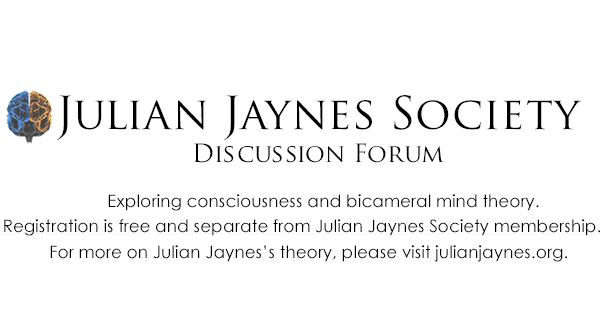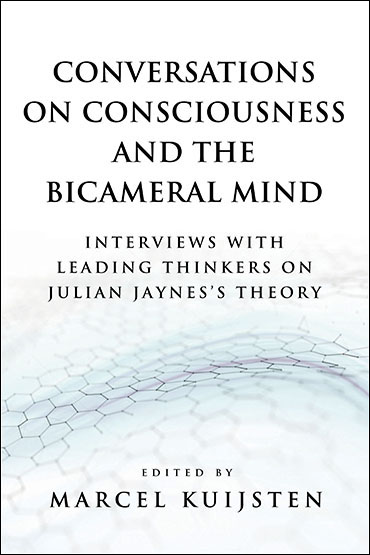Signs of early humankind’s great preoccupationobsession?with death are everywhere, from simple neolithic graves filled with a few artifacts to monumental mortuary architecture and everything else in between: massive megalithic tombs and passage graves, catacombs honeycombing the underground for miles, mausolea for the rich and famous, man-made tumuli (burial mounds), and assorted graveyards, crypts, and vaults. Ancient civilizations revolved around death, with the most important personages surrounded by complex funerary rituals and entombed in mammoth edifices, such as towering, sky-piercing pyramids.
In modern times we have continued to ruminate about deathhow can we not? Though certain traditions, some more than others, still have elaborate funerary practices, it is safe to say that over the centuries the thanatocentric impulse (describing how death plays a prominent role in a society’s worldview) has been in steady decline. It is easy to conclude that our march toward science has disabused us of silly afterlife superstitions and made us more secular as a species. But surely there is more to the story.
What Death-centric Ancient Civilizations Say about Human Psychology
A Jaynesian explanation, in the way it sheds light on how early societies treated the departed, accounts for humankind’s thanatocentricity as well as its weakening. As bicameral mentality declined (i.e., the psycho-hierarchy of supernatural superiors commanding mortal subordinates), it was replaced by Jaynesian consciousness (subjective introspectable self-awareness). Thanatocentricity is deeply implicated in two-tiered neuropsychology of governing‒governed because of how supernatural entities (ancestral ghosts, the living dead, revenants) hallucinatorily communicated with mortals. If the Jaynesian perspective is correct, then the further we go back in time, the more salient thanatocentricity should be. The challenge, from a scientific point of view, is to find an ancient society that was not thanatocentric. If one can be found, then the Jaynesian agenda is in serious jeopardy. If not, then the Jaynesian project is viable. So far, this writer has not come across any ancient society lacking thanatocentricity.
An important aspect of the death-centered worldview is thanatocracy (or necrocracy), i.e., rule by the dead. In the distant, prehistoric past rulers were probably deified clan leaders who issued commands from the grave. As social scale increased, it was more practical to have leaders, deputized by the gods, govern while alive. But in relatively complex societies, even the ordinary deceased played an important role, becoming revered ancestors or troublesome spirits. Thanatocracy, then, is not necessarily about governing structures. Rather it also involves activities such as burying family members under dwellings, installing pipes in graves to feed the entombed, and calling up the dead for advice (necromancy). In any case, whether through official rites, community-wide ceremonies, or domestic practices, the departed participated in the affairs of the living.
To explain how history has witnessed a general trend from thanatocentricity to attempts to sanitize and even deny death, we can postulate five stages delineating major changes in human mentality (which are admittedly speculative in the earlier stages). This outline is sweeping and thus leaves out many details and particulars, but given what we know, it is a good place to start an investigation of the psychohistory of death:
(1) Auto-communicative Bicamerality. Hallucinations, a side effect of language comprehension, evolved as a form of behavioral control. Initially, preconscious individuals “heard” their own voices (or perhaps those of parental figures) as a means to keep them on track for tasks requiring persistence (e.g., fashioning stone tools). This instructive, order-issuing “self-talk” was not attributed to any particular person (periodization is uncertain but probably sometime during the upper paleolithic).
(2) Proto-bicamerality. Individuals hallucinated the commands of an absent leader of small groupings (probably hunters and gatherers; periodization is uncertain but most likely during the upper paleolithic and into the neolithic depending on geography).
(3) Complex or Civilizational Bicamerality. Individuals hallucinated guidance by rulers, gods, and/or ancestors (agricultural-based city-states; roughly from the fourth to the first millennium BCE).
(4) Transitional Consciousness/Bicamerality. Social complexity caused the breakdown of bipartite mentality; this was replaced by a more adaptable subjective introspectable self-awareness (large kingdoms; periodization overlaps with complex bicamerality).
(5) Post/Vestigial Bicamerality. Subjective introspectable self-awareness became the predominant mentality while traces of the bipartite neurological arrangement still haunt the psychosocial landscape (prophetic frenzy, spirit possession, apparitional appearances, oracular inspiration, hypnosis, imaginary playmates, etc.) (large-scale empires; roughly from the early first millennium BCE to present-day).
A Present-day Example of a Necrocracy: North Korea
It is not unusual for a dictator, whether from the extreme right or extreme left of the political spectrum, to demand adoration, even idolization. This type of veneration sets up lines of authorization between the ruled and the ruler, and is arguably a relic of bicamerality, harkening back to an archaic period when individuals, lacking subjective self-autonomy, relied on leaders for key decision-making. Ironically, the most secular and “scientific” communist states, which have purported to be anti-religion and anti-superstition, have been keen to cultivate cults of personality around key leaders (e.g., Mao, Stalin, Lenin, Ho Chi Minh). Their bodies have been pickled and preserved in mausolea and put on public display. I had the opportunity to view two of these entombed rulers, and I can remember seeing these “mummified” glorified beings enveloped in an eerie, sacred atmosphere as we were ushered through the chamber and told to be respectfully silent. Appropriately, Lenin’s Mausoleum incorporates architectural elements from the Step Pyramid, the Tomb of Cyrus the Great, and, to some degree, the Temple of the Inscriptions (a Maya step pyramid) (from 1953 to 1961 Stalin shared a spot next to Lenin but was moved to the Kremlin Wall Necropolis).
An extreme example of secular religiosity is North Korea. In a throwback to archaic thanatocentric theopolitics, this isolated dynastic state, dressed up as a - utopia (officially known as the “Democratic People’s Republic of Korea”), is ruled by a dead man. Kim Il Sung (born 1912), who was the supreme leader of North Korea since its founding in 1948, built up a personality cult around himself that would make the most ego-intoxicated and narcissistic dictator blush. At least by appearances the people of North Korea worshipped him as if he were a pharaoh (what North Koreans really thought, of course, may have been very different). Today Kim Il Sung is considered a father figure and hero, a savior of the nation with mystical powers. Family members of the dynasty he established continue to rule under his authorization.
When Kim Il Sung, the “beloved and dear leader,” passed away in 1994, his son and successor, Kim Jong-Il, did not receive the title of president (previously held by his father). The North Korean rulers declared that Kim Il Sung was still in office, while in this world the president’s post was left vacant until 1998 when an amended constitution declared that: “Under the leadership of the Workers’ Party of Korea, the Democratic People’s Republic of Korea and the Korean people will hold the great leader Comrade Kim Il Sung in high esteem as the eternal President of the Republic and carry the revolutionary cause of Juche [self-reliant national independence] through to completion: by defending and carrying forward the idea and achievements of Comrade Kim Il Sung” (Preamble to the Constitution of North Korea). This meant that although dead for four years, Kim Il Sung became the everlasting leader of North Korea. Technically, the national state is still run by Kim Il Sung, making it the only government ruled by a dead person (the president’s earthly power was transferred to the head of the Presidium of the Supreme People’s Assembly).
North Korean dynastic elites authorize their own rulership and maintain legitimacy and public support by keeping Kim Il Sung’s memory alive. They achieve this not just through the gruesome techniques typical of blood-spattered tyranny, but by enshrining their late leader and wrapping him up in mythology; such behaviors evoke an earlier mentality. My argument is not that bicameral remnants apparent in North Korea are direct descendants of an earlier mentality. Rather, I contend that the bipartite psychic organization underpinning superior–subordinate relations predisposes us to construct ranking systems; this should not be surprising, as we share with primates a tendency to form dominance hierarchies. However, under extreme conditions, ranking systems can become excessively and grievously authoritative. Needless to say, such sociopolitically dysfunctional hyper-authorization obliterates the boundaries between ruler and ruled, with horrific consequences for the latter.
North Korea’s “Eternal Leader” as a Bicameral Vestige: The Psychopolitical Implications of Rule by the Dead
Posts by anthropologist, mental health counselor, and author Brian J. McVeigh on Julian Jaynes's theory and related topics.
Return to “Brian J. McVeigh's Random Thoughts”
Jump to
- JJS Forum
- ↳ General Discussion
- ↳ News Items Related to Jaynes's Theory
- ↳ Book Discussion: The Origin of Consciousness and Julian Jaynes Society Publications
- ↳ Myths, Misconceptions, and Fact Checks About Julian Jaynes's Theory
- ↳ Brian J. McVeigh's Random Thoughts
- ↳ Julian Jaynes
- ↳ Conferences, Events, and Local Discussion Groups
- ↳ Lecture Discussion
- ↳ Interview and Q&A Discussion
- ↳ 1.0. Hypothesis One: Consciousness Based On Language
- ↳ 1.01. Hypothesis One: Consciousness Based On Language | Subtopic: Consciousness & Dreams
- ↳ 1.02. Hypothesis One: Consciousness Based On Language | Subtopic: Consciousness in Children
- ↳ 1.03. Hypothesis One: Consciousness Based On Language | Subtopic: Consciousness and AI
- ↳ 2.0. Hypothesis Two: The Bicameral Mind
- ↳ 2.1. Hypothesis Two: The Bicameral Mind | Subtopic: Auditory Hallucinations in Normal Adults
- ↳ 2.2. Hypothesis Two: The Bicameral Mind | Subtopic: Hallucinations & Imaginary Companions in Children
- ↳ 2.3. Hypothesis Two: The Bicameral Mind | Subtopic: Hypnosis, Possession & Altered States of Consciousness
- ↳ 2.4. Hypothesis Two: The Bicameral Mind | Subtopic: Religion & the Bicameral Mind
- ↳ 2.5. Hypothesis Two: The Bicameral Mind | Subtopic: Schizophrenia
- ↳ 2.6. Hypothesis Two: The Bicameral Mind | Subtopic: The Mentality of Pre-Literate & Pre-Modern Peoples
- ↳ 3.0. Hypothesis Three: Dating the Development of Consciousness
- ↳ 4.0. Hypothesis Four: Jaynes's Neurological Model for the Bicameral Mind
- ↳ The Bicameral Mind in Fiction, Film & Popular Culture
- ↳ Information for Students


